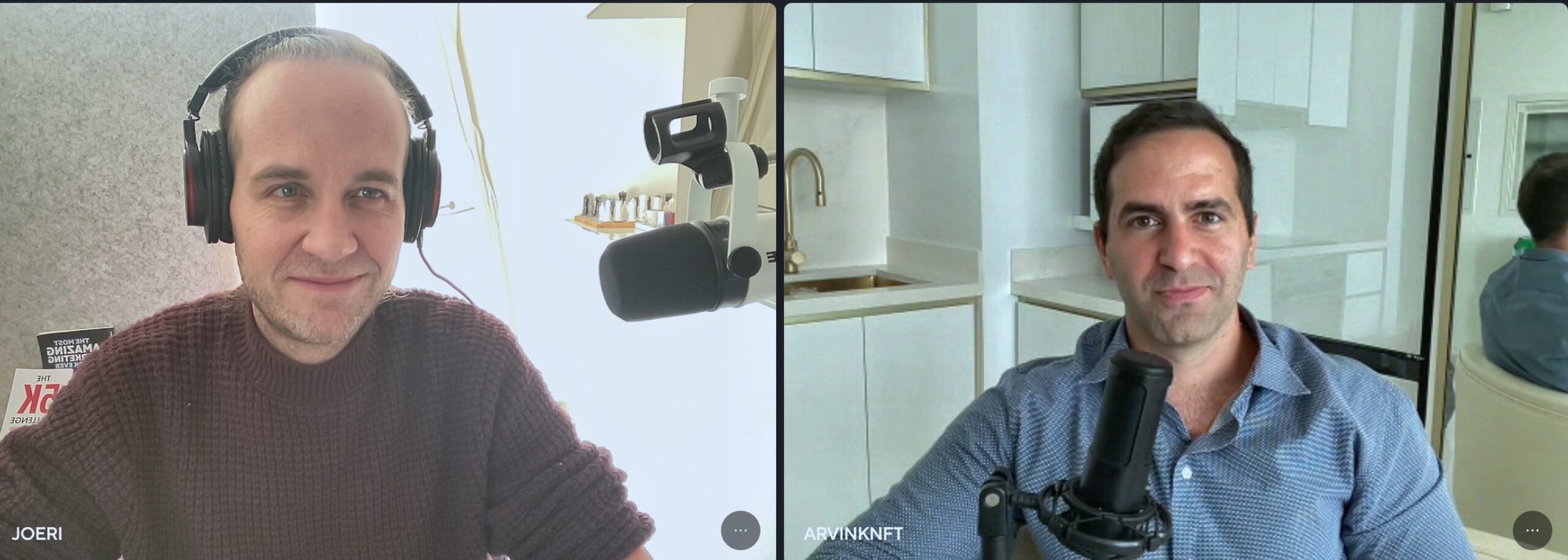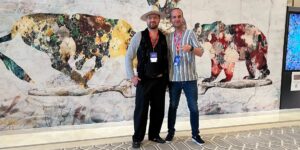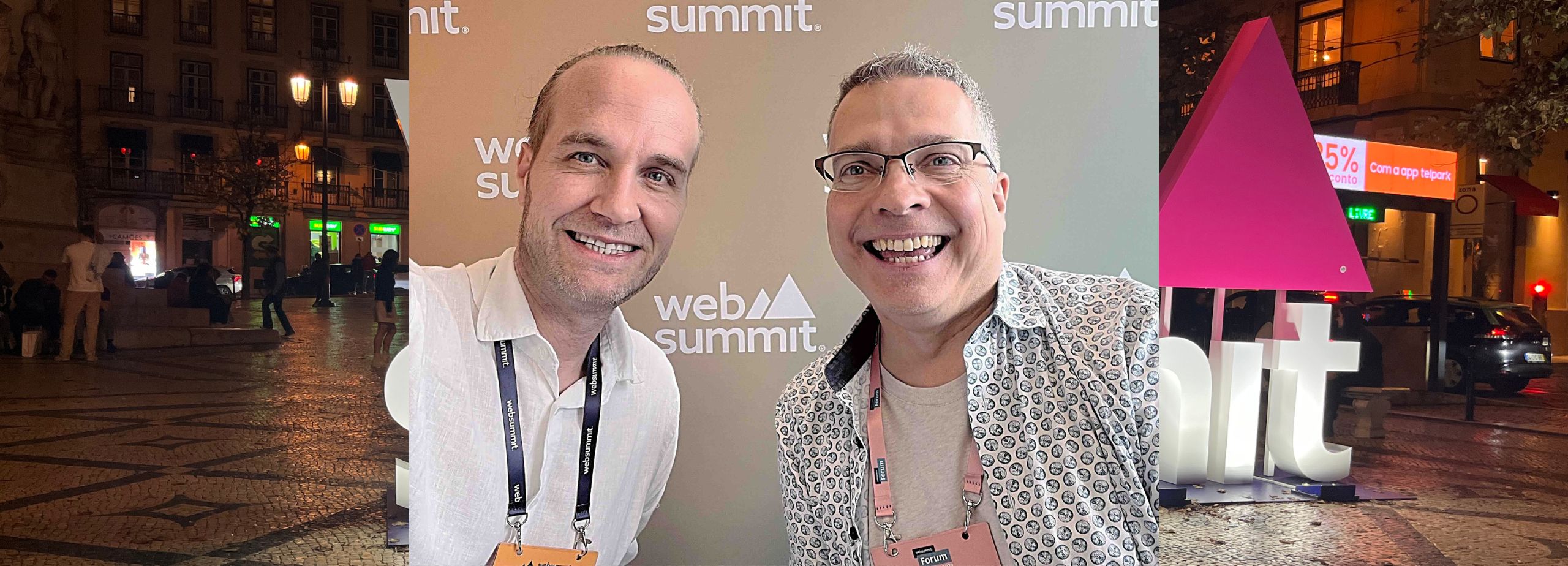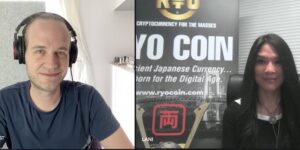From the highlands of Peru to the digital frontier of NFTs, Catherine Gairard, a symphonic metal maven, has an origin story that's nothing short of a fairy tale for the modern age.
She joins us to unpack the narrative of her journey, detailing the leap from a self-taught musician to a trailblazing figure in the NFT music scene. Her story is a testament to the power of perseverance and innovation, as she navigates the traditionally challenging landscape of music monetization and discovers her niche within an empathetic and supportive online community.
The world of music is evolving, and NFTs are at the helm of this transformation, offering creators like Catherine a platform to connect with fans on a whole new level. During our chat, she unveils the mechanics behind her "Harp Dreams" collection and the unique value NFTs bring to the concert experience. Fans aren't just spectators in this digital renaissance—they're active participants, holders of exclusive, value-imbued tickets, and beneficiaries of intimate interactions with artists. Catherine's insights are an eye-opener for anyone curious about the intersection of music, technology, and community.
To close, the encouragement Catherine extends to fellow artists is both heartfelt and electrifying. She paints the NFT community not as an exclusive club, but as an open collective where novices and veterans alike can flourish through collaboration and shared learning. Her words serve as a beacon for creators seeking to explore this innovative space and harness the potential of their art in the digital realm. Tune in for a riveting exploration of artistry, technology, and the unifying power of community.
___________________________________________________________
Ready to upgrade your Web3 marketing strategy? Don’t miss Consensus 2024 on May 29-31 in Austin, Texas. It is the largest and longest-running event on crypto, blockchain and Web3. Use code CMOSTORIES to get 15% off your pass at www.consensus2024.coindesk.com
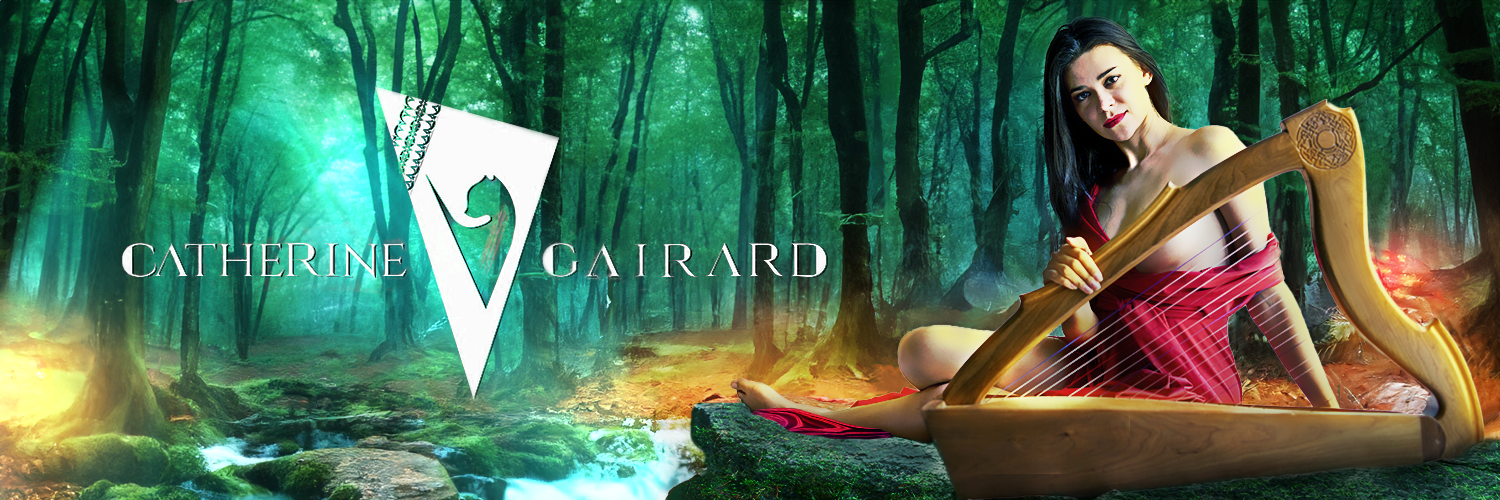
Catherine Gairard on the Web3 CMO Stories podcast
Unlocking the Digital Art Revolution: A Guide to NFTs and Streaming in Music
Ever wondered how the digital age has transformed the music industry? From the tangible vinyl records to the endless streams and unique digital art pieces, the evolution is both fascinating and complex.
In this exploration, we'll uncover how streaming services have reshaped our perception of music's value, making it more accessible but also challenging traditional economic models. We'll also venture into the world of NFTs (Non-Fungible Tokens), a groundbreaking concept that's redefining ownership and value in digital art and music. From self-taught musicians leveraging the internet to become NFT artists, to the intricate process of creating and selling music as NFTs, and the significant role of AI in content creation, we'll cover it all. Additionally, we'll discuss the importance of social media in promoting content and networking, offering a complete picture of the current digital music and art landscapes.
Understanding these shifts is vital, as they not only impact artists and creators but also redefine audience engagement and the overall cultural significance of music and art.
Curious about how these changes affect you and the future of music and digital art? Keep reading, as we answer these questions in detail, providing insights into the opportunities and challenges that lie ahead in this digital revolution.

Catherine Gairard on the Web3 CMO Stories podcast
The Impact of Streaming on Music Value
The concept of infinite plays and downloads has fundamentally altered the way we perceive and value music. In the past, music was a tangible asset, something you could hold in your hands, whether it was a vinyl record, a cassette, or a CD. Each of these physical formats had a cost associated with production, distribution, and sales, which in turn contributed to the perceived value of music. However, with the advent of streaming services, this perception has drastically changed. Now, music is readily accessible to anyone with an internet connection, leading to a scenario where songs can be played endlessly without any additional cost.
This ease of access has, in many ways, devalued music. When listeners can stream any song, at any time, without having to purchase it, the economic value that was once attached to music diminishes. This is not to say that music no longer holds value, but rather, its value is no longer predominantly measured in economic terms. The shift has been towards valuating music based on its ability to attract streams and generate data, which can then be monetized in various ways by streaming platforms and, to a lesser extent, the artists themselves.
Despite this shift, there remains a significant opportunity for artists to create unique pieces with visuals. These are not just songs but experiences, combining music with art to create something truly unique. This uniqueness has the potential to break through the noise of the streaming world, offering something that can't be endlessly replicated. It's a return to the idea of music as a tangible asset, albeit in a digital format. The value of these unique pieces is not fixed but is instead influenced by several factors, including the artist's brand and their standing within the community.
The strength of an artist's brand and their weight within the community play a pivotal role in determining the value of their music in the digital age. An artist with a strong brand and a loyal fanbase can leverage this to sell unique digital pieces at a premium. This is where the concept of branding intersects with the world of music, transforming it into a commodity that can be sold not just for its auditory value but for its cultural and symbolic value as well. The stronger the brand, the higher the potential value of the music, transcending the traditional metrics of streams and downloads to include elements of exclusivity, loyalty, and community engagement.
In conclusion, while streaming has undoubtedly changed the music industry in profound ways, it has also opened up new avenues for artists to assert the value of their work. By creating unique pieces that offer more than just audio, artists can tap into the potential of their brand and the support of their community to redefine the value of music in the digital era. It's a challenging environment, but one that also offers immense opportunities for those willing to innovate and adapt.

Catherine Gairard on the Web3 CMO Stories podcast
The Transition from Self-Taught Musician to NFT Artist
The role of the internet in self-education has been a game-changer for many aspiring artists and musicians. In the case of transitioning from a self-taught musician to an NFT artist, the internet served as a critical resource. Platforms like Coursera offered free courses that provided the foundational knowledge needed to understand and create music. This accessibility to knowledge democratized learning, allowing those without the means or access to traditional education paths to hone their skills and pursue their passions. The internet not only offered theoretical knowledge but also practical tutorials, community support, and endless resources for self-taught musicians to learn, grow, and experiment.
Understanding music theory is often seen as a daunting task due to its complexity. However, it's a fundamental aspect of music that can significantly enhance an artist's ability to compose, understand, and innovate. Books like "Music Theory for Dummies" simplify these concepts, making them accessible to beginners. This approach to learning music theory, focusing on simplification and self-paced study, empowers musicians to grasp complex concepts without feeling overwhelmed. It's a testament to the idea that with the right resources, mastering music theory is not only possible but can be enjoyable and incredibly rewarding.
The decision to pursue music professionally during the pandemic was a bold move that many artists faced. The pandemic served as a catalyst for change, pushing artists to reconsider their careers and life choices. For some, it was a moment of realization that life is unpredictable and that pursuing one's passion should not be postponed. This period saw a surge in creativity and a willingness to take risks, with artists leveraging platforms like LinkedIn to connect with collaborators, producers, and fans. The release of music on digital platforms became a viable way to share one's art with the world, despite the challenges posed by the pandemic.
However, the challenges of monetizing music in the digital age remained a significant hurdle. Traditional revenue streams, such as concerts and album sales, were not always feasible or profitable, especially for independent artists with a global fanbase. This led to the exploration of alternative avenues, such as NFTs (Non-Fungible Tokens), which presented a novel way to monetize digital art. NFTs allow artists to sell unique digital pieces, including music, as one-of-a-kind assets on the blockchain. This not only opens up new revenue streams but also provides a way to authenticate and protect digital art. The discovery of NFTs marked a significant shift in how music and digital art could be valued, sold, and owned, offering artists a unique opportunity to monetize their work in the digital era.
In essence, the transition from a self-taught musician to an NFT artist encapsulates the evolution of the music industry in the digital age. It highlights the importance of self-education, the foundational role of music theory, the impact of the pandemic on career decisions, and the innovative approaches to monetizing music. As the digital and physical worlds continue to merge, artists are finding new ways to express themselves, reach audiences, and sustain their careers in an ever-changing musical and technological landscapes.
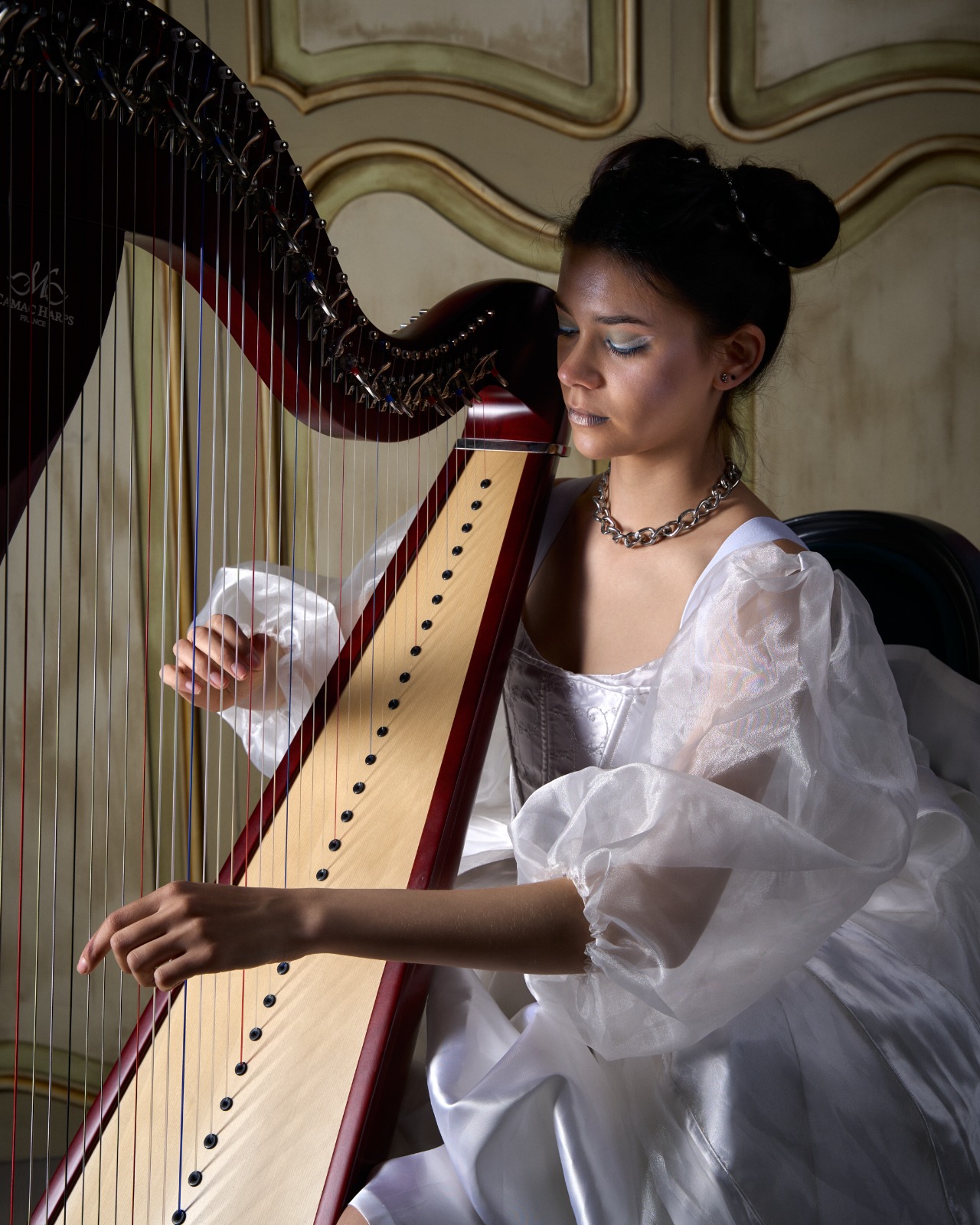
Catherine Gairard
The Value and Potential of NFTs in Music
NFTs, or Non-Fungible Tokens, have introduced a revolutionary concept in the digital art and music world by offering unique, original pieces that can be owned exclusively. Unlike traditional digital files, which can be copied and distributed infinitely without loss of quality, NFTs are one-of-a-kind digital assets verified on a blockchain. This verification process ensures that each NFT is original and unique, providing a digital certificate of authenticity for the piece it represents. For musicians and artists, this means that their digital creations can now be sold as exclusive, collectible items, much like physical art in the traditional art world.
The distinction between owning an NFT and having infinite copies of a digital file is profound. While anyone can download a song or a piece of digital art, owning the NFT of that song or art piece is akin to owning an original painting. Just as a printed poster of the Mona Lisa does not hold the same value as the original painting, a digital file of a song does not possess the same value as its NFT. This uniqueness and scarcity drive the value of NFTs, allowing artists to monetize their work in ways that were not possible with traditional digital distribution methods.
Branding plays a critical role in determining the value of NFTs. Just as the reputation and historical significance of an artist can increase the value of their physical artwork, the brand and community support behind a musician or digital artist can significantly impact the value of their NFTs. Artists with a strong brand presence and loyal fanbase are more likely to see higher demand and value for their NFTs. This dynamic creates an exciting opportunity for artists to leverage their brand and engage with their community in innovative ways, further enhancing the value of their digital creations.
Beyond being unique digital assets, NFTs hold immense potential as multifunctional tools within the music industry. One particularly innovative application is using NFTs as concert tickets. This approach not only provides a secure and verifiable method of ticketing but also adds value for the ticket holder. Unlike traditional paper or digital tickets, which lose their utility after the event, an NFT ticket remains a collectible asset with potential lifetime value. Artists can further enhance this value by offering additional perks to NFT ticket holders, such as exclusive access to content, merchandise, or even participation in special events. This multifaceted utility transforms the concept of concert tickets, turning them into valuable assets that fans can collect, trade, or sell.
In conclusion, the advent of NFTs in the music industry has opened up new avenues for artists to monetize their work, engage with fans, and create unique, valuable digital assets. From providing a means to sell original digital creations to reimagining the concept of concert tickets, NFTs offer a wealth of opportunities for innovation and growth in the music industry. As technology continues to evolve, the potential applications of NFTs are bound to expand, further transforming the way music and digital art are created, distributed, and valued.
The Process of Creating and Selling Music as NFTs
Sharing the creative process plays a pivotal role in the world of music NFTs. It's not just about the final product; it's about the story, the sweat, and the inspiration behind each note and lyric. For artists, opening up about their creative process can forge a deeper connection with their audience. It transforms listeners into participants of a shared musical expedition. Whether it's through social media posts, behind-the-scenes videos, or live streaming sessions, giving fans a glimpse into the making of music can significantly enhance the perceived value of the final NFT. This transparency not only builds anticipation but also fosters a sense of community and belonging among fans, making the eventual release of an NFT much more than just a transaction—it becomes a collective milestone.
However, navigating the technical challenges of creating NFTs can be daunting, especially for artists whose expertise lies in melodies rather than megabytes. The leap from composing music to minting digital assets involves a steep learning curve. Understanding blockchain technology, choosing the right platform, and even deciding on the specifics of the NFT—such as whether it will be a one-of-a-kind piece or part of a limited series—requires time and effort. Moreover, ensuring that the digital asset is properly registered on the blockchain to guarantee its uniqueness and ownership adds another layer of complexity. Yet, this technical investment is essential for artists looking to embrace the NFT space, offering them unprecedented control over their work and its distribution.
The choice of platform for selling NFTs is critical. Each platform comes with its own set of features, audience, and costs. Some platforms may cater specifically to visual arts, while others are more music-focused, offering features tailored to the needs of musicians and composers. Additionally, the choice between blockchain networks—such as Ethereum, which offers widespread recognition and security, versus newer, perhaps more eco-friendly alternatives—can impact both the cost of minting NFTs and their potential market. Artists must also consider the accessibility of these platforms for their fans. As the NFT space evolves, platforms that simplify transactions by accepting credit cards or offering user-friendly interfaces can significantly lower the barrier to entry for fans new to the world of digital collectibles.
The potential use of AI in music creation and NFT generation is a fascinating frontier. While some purists might argue that AI-generated music lacks the soul of human-composed melodies, there's no denying the technology's potential for innovation. AI can assist artists in various ways, from generating unique sounds and harmonies to automating certain aspects of the production process. However, the true magic happens when artists blend their creativity with AI's capabilities, using it as a tool rather than a crutch. This synergy can lead to the creation of truly unique pieces that stand out in the crowded NFT marketplace. Moreover, AI can play a role in the design of visual elements accompanying music NFTs, offering a complete sensory experience that enhances the value of the digital asset.
The Role of AI in Music and Content Creation
Exploring the use of AI for generating album cover art, it's evident that artificial intelligence has become a valuable ally for artists, especially those who may not possess strong skills in visual arts. Imagine you're just starting out with your music career; you've got your tracks ready, but you're stuck at the visual representation of your work. This is where AI steps in as a game-changer. By leveraging AI tools, you can generate captivating album cover art that resonates with the theme and mood of your music. This approach not only simplifies the creative process but also ensures that your music is accompanied by visually appealing artwork, making your project more attractive to potential listeners. The beauty of using AI in this context lies in its ability to bridge the gap between musical and visual creativity, enabling musicians to focus on what they do best—creating music.
However, the balance between organic creation and AI assistance is a nuanced aspect of modern content creation. While AI offers incredible efficiency and innovation, there's a growing consensus about the importance of maintaining the authenticity of one's art. Whether you're a musician, an illustrator, or any other type of creator, keeping your work as organic as possible is seen as valuable. The rationale behind this perspective is that as AI technology evolves, becoming more adept at generating various forms of content, the distinction between AI-generated and human-created work will blur. In such a future, works that are purely human-made or have a significant human touch might be regarded as more valuable or unique. Therefore, while it's beneficial to utilize AI as a tool to enhance creativity or streamline certain processes, preserving the essence of personal craftsmanship in your art could set it apart in an increasingly automated world.
The versatility of AI extends beyond visual arts into generating blog articles and marketing strategies. For instance, after recording a podcast, utilizing AI to create a detailed blog article about the discussion can significantly amplify your content's reach. This application of AI doesn't invent new information but rather repurposes your existing content in a new format, making it accessible to a different audience segment. Similarly, AI's ability to generate innovative marketing strategies can be a boon for creators looking to promote their work more effectively. By inputting basic information about your project, AI can suggest a variety of promotional tactics and platforms that you might not have considered, thereby expanding your visibility and audience engagement.
Furthermore, AI's role in generating music ideas and podcast titles showcases its potential as a creative partner. Imagine being at a creative impasse, unsure of where to start with a new piece of music or looking for the perfect title for your latest podcast episode. AI can serve as a source of inspiration, suggesting musical keys, tempos, and even genres to experiment with, based on your requirements. For example, if you're creating ambient music for a video, AI can recommend starting with a specific key and suggest instruments that align with the desired atmosphere, acting much like a knowledgeable friend or teacher offering advice. Similarly, AI can propose engaging and relevant titles for your podcast episodes, sparking ideas that you might not have considered. This collaborative approach allows creators to leverage AI's computational power for initial guidance while leaving ample room for personal creativity and decision-making.
The Use of AI in Podcast Production
AI's transformative impact on podcast production is increasingly evident, particularly in the realms of sound editing and music addition. Imagine you've just recorded a podcast episode, but upon playback, you notice some audio issues—background noise, uneven volume levels, or long pauses that disrupt the flow of conversation. Traditionally, addressing these issues would require significant time and expertise in sound editing. However, with AI-powered tools at your disposal, these challenges can be swiftly and efficiently resolved. AI algorithms can analyze the audio, identify imperfections, and automatically adjust levels or remove unwanted noise, ensuring that the final product is of the highest quality. Moreover, adding music to podcasts, whether it's an intro tune, background score, or outro music, can greatly enhance the listening experience. AI can assist in this aspect by recommending music that complements the mood and theme of the podcast, or even generating original music pieces tailored to your specifications. This not only saves time but also adds a professional touch to your podcast, making it more engaging for your audience.
Beyond technical enhancements, AI plays a pivotal role in the creative aspects of podcasting, such as generating compelling titles. A captivating title is essential for attracting listeners and conveying the essence of an episode. AI, with its vast database of language patterns and ability to analyze content, can suggest titles that are both relevant and attention-grabbing. This functionality is akin to having a brainstorming partner who's available round the clock, ready to offer fresh perspectives and ideas. By inputting a brief description of your episode or key themes discussed, AI can generate a list of potential titles, from which you can choose the one that best fits your episode. This collaborative process not only streamlines the title selection but also ensures that your episodes stand out in the crowded podcasting space.
The overall enhancement of podcast production quality through AI is undeniable. From improving sound quality to assisting in content creation, AI tools empower podcasters to produce content that rivals professional studios. This democratization of content creation means that even independent creators with limited resources can produce podcasts that are polished, engaging, and high-quality. Furthermore, AI's ability to automate repetitive tasks, such as audio editing or title generation, frees up creators to focus on what they do best—crafting compelling narratives and connecting with their audience. This shift not only elevates the quality of individual podcasts but also raises the bar for the podcasting industry as a whole.
Looking towards the future of podcast production, the potential applications of AI are boundless. As AI technology continues to evolve, we can anticipate even more sophisticated tools that will further simplify the production process, enhance content quality, and unlock new creative possibilities. For instance, AI could offer more nuanced sound editing capabilities, generate dynamic music that adapts to the tone of the conversation, or even assist in scripting episodes based on a set of themes provided by the creator. The integration of AI in podcast production is not just about making the process easier; it's about reimagining what's possible in the world of podcasting, enabling creators to push the boundaries of storytelling and audience engagement.
The Role of Social Media in Content Promotion and Networking
Twitter spaces have emerged as a powerful tool for networking and exchanging ideas among creators and audiences alike. These audio-only chat rooms allow for real-time discussions on a wide array of topics, providing a platform for creators to share their insights, experiences, and projects. By participating in or hosting Twitter spaces, creators can significantly expand their reach, connecting with like-minded individuals and potential collaborators. This interactive environment fosters a sense of community and engagement, making it an ideal space for brainstorming and idea exchange. Moreover, the audio format adds a personal touch, allowing participants to convey their messages more effectively and build stronger connections with their audience.
Social media platforms play a pivotal role in content promotion, each serving unique purposes in a creator's promotional strategy. Instagram, YouTube, and Twitter, for instance, cater to different types of content and audiences. Instagram's visually driven platform is perfect for showcasing album covers, behind-the-scenes photos, and short video clips, while YouTube offers a space for longer-form content such as music videos, tutorials, and vlogs. Twitter, on the other hand, excels in real-time communication, enabling creators to engage directly with their followers through tweets, retweets, and Twitter spaces. By leveraging the strengths of each platform, creators can effectively promote their content, reaching a wider and more diverse audience.
The import of bringing value to the community in social media spaces can't be overstated. Whether it's through sharing knowledge, offering support, or simply engaging in meaningful conversations, contributing positively to the community is essential. This approach not only helps in building a loyal following but also establishes the creator's reputation as a valuable member of the community. In spaces like Twitter spaces or Clubhouse rooms, where the focus is on dialogue and exchange, providing insightful comments or helpful advice can significantly enhance one's visibility and credibility. This, in turn, can lead to more opportunities for collaboration and promotion, as fellow community members are more likely to support and share content from contributors they respect and trust.
Social media for promoting music and NFT projects has become increasingly popular among artists looking to monetize their work in innovative ways. Platforms like Twitter and Instagram offer a direct line to potential buyers and collectors, making them ideal for showcasing NFT art or announcing new music releases. The key to success in these endeavors lies in effective storytelling and engagement. By sharing the story behind an NFT project or the inspiration for a new song, creators can create a deeper connection with their audience, encouraging support and investment. Additionally, the interactive nature of social media allows for immediate feedback and interaction, creating a dynamic space where creators can adapt and respond to their audience's interests and preferences. As the digital art and music landscapes continue to evolve, social media remains an essential tool for creators looking to thrive in these innovative domains.
Encouragement for Artists to Enter the NFT World
The misconception of needing cryptocurrency expertise to enter the NFT world is a common barrier that prevents many artists from exploring this innovative space. It's easy to assume that a deep understanding of blockchain technology or cryptocurrency investments is a prerequisite for creating and selling NFTs (Non-Fungible Tokens). However, this couldn't be further from the truth. The reality is that the NFT ecosystem is designed to be accessible to creators of all backgrounds, including those with little to no experience in cryptocurrency. With numerous platforms and communities ready to guide newcomers through the process, the entry barrier is much lower than it appears. This democratization of digital art sales and ownership through NFTs opens up a world of possibilities for artists looking to monetize their work in new and exciting ways.
The welcoming nature of the NFT community further underscores the accessibility of this space for artists. Unlike traditional art markets, which can often feel exclusive and intimidating, the NFT community is known for its inclusivity and supportiveness. Newcomers are greeted with open arms, with more experienced members eager to share their knowledge and insights. This collaborative environment not only makes it easier for artists to get started with NFTs but also fosters a sense of belonging and camaraderie among creators. Whether it's through social media platforms, forums, or direct messaging, there's always someone willing to help, answer questions, and provide encouragement. This community aspect is a significant draw for many artists, offering a network of support that can be invaluable in navigating the complexities of the NFT world.
The potential of monetizing art through NFTs is a compelling reason for artists to consider entering this space. NFTs offer a unique opportunity to sell digital art in a way that recognizes its value and uniqueness, something that has been challenging in the digital age. By tokenizing their work, artists can ensure authenticity and scarcity, leading to increased value and interest from collectors. Moreover, NFTs enable artists to receive royalties for secondary sales, providing a continuous income stream that is not typically available through traditional art sales. This economic model empowers creators, allowing them to benefit directly from the appreciation of their work over time. For artists looking to make a living from their art, the NFT market presents an attractive alternative to conventional avenues, with the potential for greater financial rewards and artistic recognition.
The importance of learning and trying new things in the NFT community can't be overstated. The world of NFTs is rapidly evolving, with new technologies, platforms, and creative possibilities emerging regularly. For artists willing to experiment and learn, this dynamic environment offers endless opportunities for growth and innovation. Engaging with the NFT community, participating in discussions, and staying informed about the latest trends and developments can inspire new ideas and approaches to art. Moreover, the process of creating and selling NFTs itself can be a valuable learning experience, offering insights into digital marketing, online sales, and the intersection of art and technology. By embracing the spirit of exploration and openness, artists can discover new avenues for expression and success in the digital age.
Wrapping It Up
As we've navigated through the transformative landscapes of music, NFTs, and AI in content creation, it's clear that the digital age has ushered in unprecedented opportunities and challenges for artists and creators.
The shift from physical to digital has fundamentally changed how we value music, with streaming and NFTs offering new avenues for monetization and engagement.
AI's role in content creation, from generating album art to enhancing podcast production, highlights the potential for technology to augment human creativity.
The importance of community and branding in the digital space underscores the need for artists to engage with their audience in meaningful ways.
As the boundaries between technology and creativity continue to blur, one wonders: How will artists maintain the authenticity of their work in an increasingly automated world? Until we meet again, let's ponder on this evolving narrative.
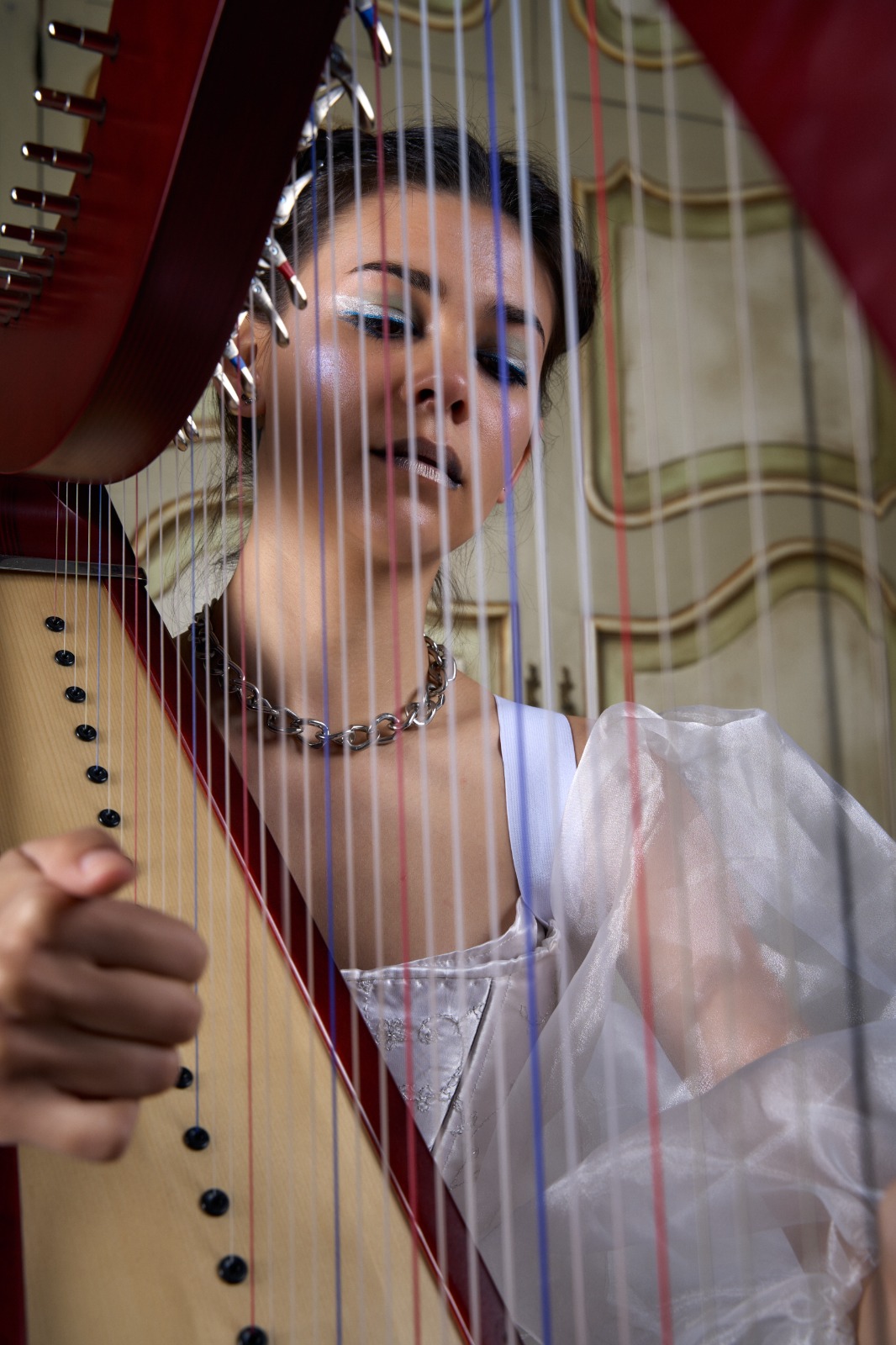
Catherine Gairard
KEY HIGHLIGHTS
[01:20] Can you describe your journey from being a self-taught musician in Peru to becoming an NFT artist?
[07:35] How do you create NFTs? Do you have unique pieces stored on the blockchain, or do you produce multiple versions with different numbers for the same piece?
[09:09] How did you learn about cryptocurrency wallets, exchanges, and trading various coins? Any preferences between Ethereum, blockchain, or Solana for these activities?
[10:30] How do you engage with your audience on platforms like Twitter, LinkedIn, and others, considering they're not typically associated with music or art? Do you find it challenging to stand out and invest time in these platforms compared to more music-centric ones like YouTube or Instagram?
[12:21] Do you encounter challenges explaining NFTs to fans who may not be familiar with platforms like Twitter or Web3? Is this lack of understanding an obstacle for your fans to own your music as NFTs?
[15:45] What are the steps you take from creating the music to making it available for purchase by people?
[16:52] How do you create and list your music as NFTs? Do you use a user-friendly platform that supports credit card payments, and can you explain the process briefly?
[18:43] Do you use AI in your creative process, given its widespread use?
[23:53] Is YouTube where you are most active with your content, or where else can people find your music if they want to listen to it?
NOTABLE QUOTES
“As an artist I saw the value on the NFTs because it's really saying that particular piece that is registered in the blockchain and is unchangeable is stating that this is like the original piece.”
“With an NFT, okay, it's the ticket for the concert, but after the concert you are still keeping the piece that has some value, which is interesting.”
“Since I am a musician it is a bit boring to use AI because it generates everything for you.”
“So at some point, anyone will be able to do AI and I believe aand I want to believe that those who still have the skill that will have much more value.”
“I am not an expert on cryptocurrency and yet I am doing things in the NFT community. It's a very welcoming community. So if there's anyone who's listening to me right now and was thinking about getting in there and showing their art and monetize it through this way, I totally encourage you to do it.”
MENTIONED RESOURCES
YouTube: https://www.youtube.com/@catherinegairard
CONNECT
LinkedIn: https://www.linkedin.com/in/cathgairard/
Twitter: https://twitter.com/CatherineGairar

